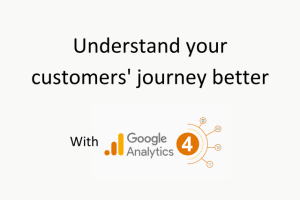For 2019, marketers will need to increase efforts at data consolidation to allow truly effective multi-channel strategies.
Marketing leaders are in the throes of 2019 planning and there’s no doubt improving consumer experiences is among the top priorities for the new year. Data shows consumer expectations (and frustrations!) are on the rise, and brands are scrambling to understand to deepen brand-to-consumer engagement. This article will explore three ways brands can make the most of data to improve consumer relationships.
Understand that consumers are evolving, and grow with them
Recent data from a global study which polled 7,000 consumers shows a third of consumers expect brands to anticipate their needs before they arise, and a whopping 70 percent of global consumers are annoyed when every company correspondence is about making a sale. Likewise, Accenture reports 75 percent of consumers are more likely to buy from a retailer that recognizes them by name, recommends options based on past purchases, or knows their purchase history.
Now more than ever, consumers expect brands to understand them and treat engagements as evidence that they are committed to knowing them better as individuals. Whether it be through recommended products, engagement channel preferences (like social media or email), more relevant content (back to school tips or downsizing advice for empty nesters) or selecting better promotions (free shipping versus bundle deals versus free sample products), brands will benefit from going the extra mile.
Glossier is an excellent brand example of evolutionary marketing. In an extensive feature on its founder, Emily Weiss, Entrepreneur Magazine wrote:
Her customers lived on social, and her products are visual by design, which meant that, with the right tools in place, sites like Instagram could become Glossier’s R&D lab and marketing platform…the company began using Instagram to build mini focus groups and quickly create products based on what they learn.
Make data-driven marketing strategies a consistent reality
According to six months’ worth of database, customer and engagement research, Forrester Research found that “‘data-driven marketing strategies are the new standard.” According to Forrester, “B2C marketers are collaborating with CRM teams to optimize customer relationships. Customer database and engagement agencies have used this opportunity to carve out a spot for themselves on agency rosters by keeping databases secure and compliant with global regulations, as well as creating real-time insights for marketers to act on.” The industry is seeing more proof that data-led strategies are working, but that doesn’t come without its challenges.
Many marketers find critical data is spread widely across various platforms. Sixty-nine CMOs from the likes of Tacori, Fidelity Life, Office Depot, recently shared their challenges in a study conducted by The CMO Club, with 42% of them citing customer data management as the most difficult aspect of marketing technology. For 2019, marketers will need to increase efforts at data consolidation to allow truly effective multi-channel strategies.
One such success story is Opel. The 110-year-old German automobile manufacturer, which prides itself on product and service innovations, looked to marketing technology and data to strengthen its pipeline. Ultimately, by developing a data model tied to a specific goal, the company’s prospect database grew 30 percent in four months, while the number of identified profiles increased over 473 percent.
Look at data as an opportunity by working backward from a goal to determine which data sets are meaningful. Intentional, focused data collection, consolidation, and output is possible when marketers are working to uncover customer trends and opportunities. Here are a few tips:
- Create an audit of data collection methods and management systems. This focus allows you to truly understand what systems people use and how they use them.
- Apply industry standards for your business and create data consolidation plans accordingly. This should be a fundamental driver of systems designed to collect, manage and store data for both short term and long-term basis.
- Know the privacy laws of your state and country. For those companies managing personal information of Californians, the California Consumer Privacy Act of 2018 (CCPA) requires that certain data be available on demand as of January 1, 2020. Legislation like this should be incorporated into your data consolidation strategy.
Experience is everything
CMOs know how critical it is to improve relationship marketing, with 62 percent of marketers noting it is the most important (or one of the most important) functions of their team this coming year. Of course, communication and engagement is a big part of that, with two-thirds saying their top marketing automation goal for 2019 is to speak to their customers in a more relevant way. That sentiment is echoed by an Adobe report: 33 percent of retailers cite “targeting and personalization” among their top three tactical priorities for the year ahead, higher than for any other marketing tactic.
So how does a brand build both the communication channels and experience they seek? Here are a few things to consider:
- Ensure sales and customer service teams are properly aligned: Nothing irritates a person more than being solicited to buy a product they’ve already purchased (or hated and returned). There are many opportunities for customer feedback and service requests to inform which marketing strategies are working or not. Be sure your customer service department is a part of marketing and campaign conversations – they’ll have real-time insights that are worth hearing.
- Lead with your values: Digital marketing can be a double-edged sword. There is enormous value in connecting via multiple channels with your customers and learning more about them through data, but brands that don’t honor consumer preferences ultimately fail because their values are being compromised in favor of potential sales. And, let’s face it, if you don’t respect things like opt-out requests or address poor consumer experiences, customers will melt away like post-Christmas snowmen.
Opinions expressed in this article are those of the guest author and not necessarily Marketing Land. Staff authors are listed here.
Marketing Land – Internet Marketing News, Strategies & Tips
(70)
Report Post





